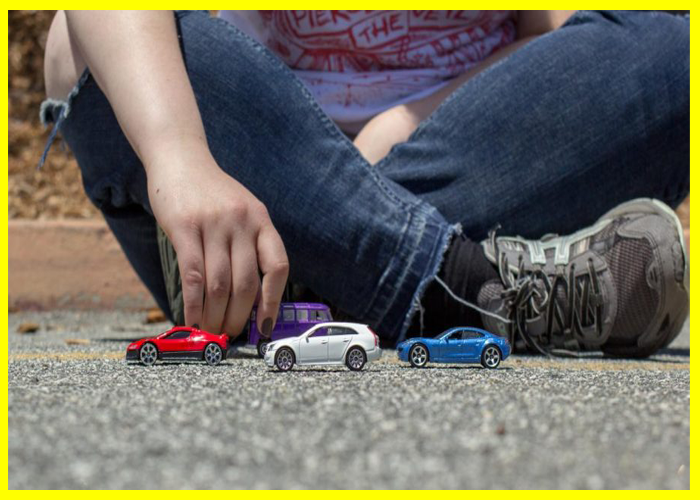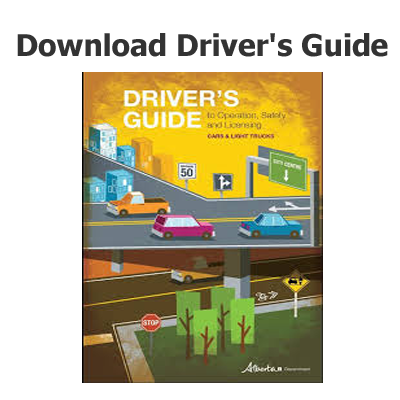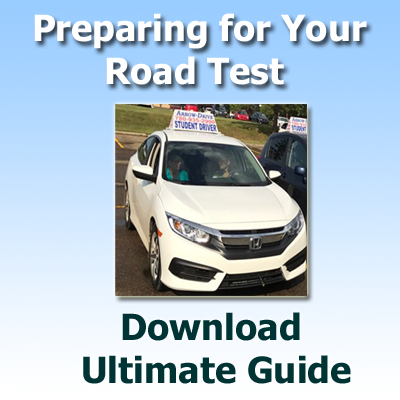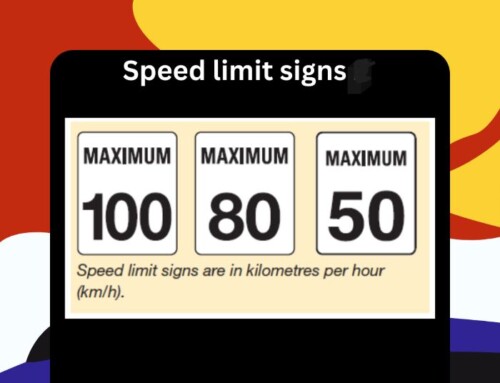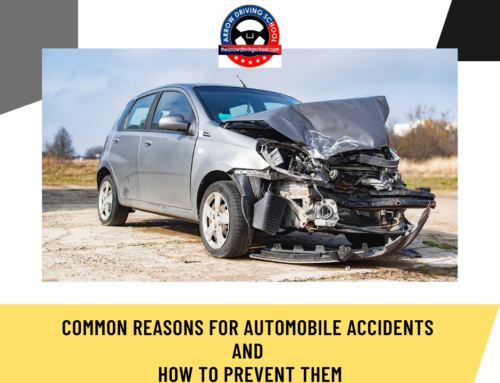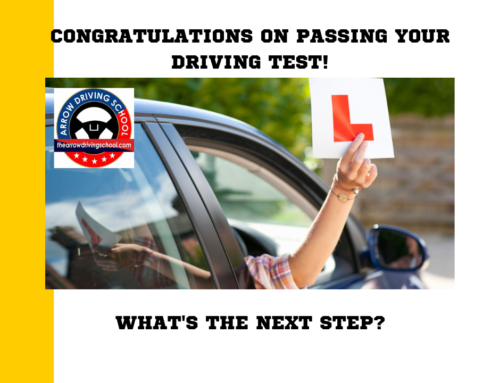20 Defensive Driving Tips
1. Focus on Driving
Do not let a discussion with someone in the car, kids in the backseat, air conditioning, radio, or phones distract your driving. Distracted driving is incredibly dangerous. Even though the majority of drivers are aware of the danger, everyday deaths occur because of distracted driving. Do not apply makeup, smoke, eat, text, or talk on a cell phone. Don’t talk with passengers or play the radio when you need to pay attention to the road. Stay focused and present while driving. Do not allow your mind wander or daydream.
2. Anticipate the Mistakes of Others
Trust only your driving ability. Even excellent drivers cannot control those driving around them. Other drivers are the biggest threat. Many are not skilled and possibly under the influence of alcohol or drugs. Some have no concern for other drivers.
Pay close attention to what others do at all times. There is no safe assumption that other drivers automatically follow traffic laws and make smart driving decisions. Though you obey traffic laws and drive safely does not mean all drivers do.
3. Slow Down
In 2009, the U.S. Census reported over 33,000 fatalities caused by speeding. Traveling fast requires a longer time to stop and makes a bigger impact when hitting another vehicle. Travel with the traffic flow as long as it is within the recommended speed limits.
No matter how much you enjoy the open road or feel the need to hurry, speeding is more dangerous than many drivers realize. Research went into the posted speed limits. Things such as hills, blind curves, proximity to places children congregate, driveways, and side streets play a role in setting proper speed limits.
4. Use Safety Devices
Choose a vehicle that has a high safety rating with lots of airbags. Make an investment in the right seat belt adjusters and child restraints for your family and use them. According to the The Center for Disease Control and Prevention, the use of size- and age-appropriate car and booster seats reduce fatal and serious injuries by over 50 percent. Airbags, child safety seats, anti-lock brake systems, and other specifically designed equipment undergo testing to ensure safer trips. Purchase additional safety options for cars not properly equipped.
5. Always Use Your Seat Belt
Every year there are many preventable car fatalities when people fail to wear their seat belts. The National Safety Council tells us the risk of injury is 50 percent less likely with the use of seat belts. There were 75,000 lives saved by seat belts in the years between 2004 and 2008. They continue to save 14,000 lives every year. Commercial truck drivers, intoxicated drivers, rural drivers, and teens are least likely to use their seat belts. Make sure you and your passengers use seat belts.
6. Yield to Other Drivers
Be safe rather than sorry if you are not certain which driver has the right of way. Give in to drivers who feel they have the right of way even if you disagree. Losing a little time is better than being a party to an accident. The Insurance Institute for Highway Safety reports the ratio of men to women who fail to yield is 1.5 to 1. Don’t be someone who bullies and forces your way around. Make yielding a habit even when the other driver is breaking the law.
7. Stop at Red Lights
The leading cause of collisions at intersections is running a red light. The reasons include lack of attention, glare from the sun, and being in a hurry. It is best to slow down before every intersection to evaluate the situation. Do not race the amber light.
Intersections are dangerous places where many accidents occur. Not only is running a stop sign or red light incredibly dangerous, but it is also illegal. Stop two full seconds at a stop sign. Sometimes people have the perception the vehicle has come to a stop when it hasn’t.
8. Use Blinkers
Do not confuse others with your driving. Richard Ponziani, from the Society of Automotive Engineers, conducted a study that found improper or neglected turn signals cause two million car accidents nationwide. Failing to signal has the potential to invalidate an insurance claim when an accident occurs, making the driver financially responsible for the damages caused. There are also other ways to communicate besides using the blinker. Put the vehicle in a position that shows intent or wave and give other drivers the right of way.
9. Control Your Emotions in Stressful Situations
Bad drivers, rush hour, and poor driving conditions are stress factors with which drivers contend. Road rage is more than an urban myth. Because you have no idea who is driving the vehicle that cut you off, the safest strategy is to overlook the offense and back away.
In all 50 states, murders occurred over trivial offenses that caused road rage. Getting revenge opens the chance of getting killed along with innocent drivers in the vicinity. If there is suspicion of a drunk driver, stay away from the vehicle, and alert authorities when it is safe.
10. Leave Room Between You and Other Motorists
Tailgating causes collisions. The driver who tailgates foots the repair bills. According to the NHTSA, over 33 percent of traffic accidents are due to tailgating. They are preventable with the proper distance between vehicles. Allow a minimum of two seconds stop time when weather conditions are good and more in bad weather. Allow space for other drivers to pass or change lanes. It prevents a rear-end collision if a sudden stop is necessary. The area also provides a driver with space for an emergency maneuver if needed.
11. Stay Out of the Way of Others and Monitor Your Blind Spots
Especially when driving in the vicinity of large vehicles, blind-spot monitoring is of great importance. The rule of thumb says, if a driver cannot see the mirror of a truck, the truck driver cannot see the vehicle the driver occupies. Many accidents that involve semi-trucks are fatal for drivers in cars. Driving behind a bus or full-size car also significantly reduces vision. You have no power over what goes on ahead. Allow three car lengths to have control over the situation. Be extremely careful when you follow large-size vehicles.
12. Do Not Drive Under the Influence
Driving while on drugs or medications, tired, or driving under the influence impairs driving. It reduces the ability to focus and inhibits reaction time. Even OTC cold medications alter response time. Honestly assess yourself before getting behind the wheel. Those who drink alcoholic beverages only metabolize one drink in an hour.
Even though all drivers are aware of the facts, the number one cause of vehicular accidents is impaired driving. A staggering number of people die each year because of drunk drivers. Don’t be one of the people who ignores the obvious advice.
13. Be Aware of Road Conditions
When roads are wet or slick, particularly in the first 30 minutes of storms or in heavy downpours, braking time increases. Do not use the cruise control in bad weather. Drive as slowly as feasible. Learn how to detect and react to hydroplaning properly. In snowy weather use snow chains if snow accumulates on the highway and drive slowly. Snow chains are not suitable for safe driving on ice. Invest in snow tires if you reside in an area where ice and snow are common.
14. Inflate Tires Properly and Change Them When Worn
Properly inflated tires make handling a vehicle safer. Blowouts cause instant loss of control. All parts of a car require proper maintenance to be in good working order. There is no need for professional diagnostics for tires. Check the tread pattern and pressure on a regular basis to avoid decreased traction, braking, and handling. Improper tire pressure is among the most common maintenance problems. Pressure in the tires that is too low or high, or uneven impacts the performance of a vehicle, especially heavy vehicles such as SUVs or high-performance cars.
15. Use Headlights Properly
Turn on headlights anytime low light, snow, rain, fog, or winding roads impair visibility. Use high beams in areas of low traffic, and turn them down when oncoming drivers approach. Not only are headlights safety components of vehicles, but drivers also have a legal obligation to use them. Failure to use headlights when driving at night earns the driver an expensive ticket. Drivers get tickets for having broken headlights. They give maximum visibility when driving a vehicle. When it is dark outside, they light the road in front of the driver.
16. Maintain Your Vehicle
Regular fluid checks and oil changes save drivers from surprise breakdowns. Without proper maintenance, the chances of serious problems are likely and are often expensive. Performing routine maintenance reduces the risk of serious problems and improves the driving quality of a vehicle.
Caring for a car properly increases safety, cuts down on expenses, boosts the car’s performance, and saves time. There is a connection between the condition of a vehicle and safe driving. You, your passengers, and those sharing the road are at risk if the car operates improperly. Well-maintained cars run better.
17. Keep a Steady Pace
Unpredictable stops, unexpected lane changes, and sudden decreases or increases in speed make it difficult for other drivers to anticipate the actions of the culprit. Be predictable. Don’t surprise drivers around you. If every vehicle travels at the same speed, the chance of an accident is less likely to occur.
Drastic changes cause chain reactions that lead to accidents. It is an excellent idea to attempt to match other drivers’ speed as long as they are not speeding. Matching the speed of drivers around you is a general rule that requires some common sense.
18. Look Ahead of the Vehicle
Keep your eyes down the road and try to anticipate problems before you encounter them. Be on the lookout for highway debris, intersections, slow traffic, and erratic drivers. Looking ahead 15 to 20 seconds is a recommendation that gives drivers time to recognize possible threats.
Drivers notice traffic jams, road work, and signs giving directions to change lanes. There is likely a driving school in your area that teaches defensive driving. It is an excellent gift for a new driver in the family or a preventative exercise for you.
19. Follow the Traffic Laws
The typical person breaks at least one law such as speeding, rolling through stop signs, and not wearing seat belts every time they drive. The reasons behind the traffic laws are to make the road safe for everyone. Follow the rules and pay attention to the road sign directions.
Being aware of the surroundings and paying attention to traffic laws are the best ways to avoid accidents. Know the laws concerning cell phones along the route you drive. Using cell phones is legal in some places and illegal in others. Ignorance is usually no acceptable excuse.
20. Share the Road
You are not the sole driver on the road. Share the road graciously. Recognize all drivers deserve the respect of others. Allow other drivers the legal use of the road. Include pedestrians, bicyclists, as well as maintenance vehicles, busses, and trucks. Roads serve many purposes, so share responsibly. Respect stopped vehicles. If you pass a vehicle stopped on the road, move into the next lane if feasible. If a lane change is not wise, slow down as you pass the vehicle.

